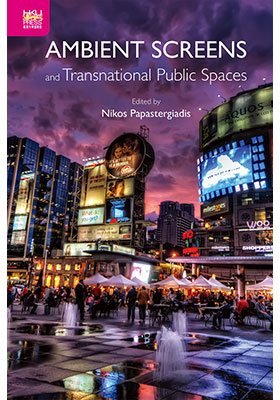Ambient Screens and Transnational Public Spaces
(屏幕氛圍與跨國公共空間)
ISBN : 978-988-8208-92-0
July 2016
264 pages, 6″ x 9″, 12 b&w illus.
- HK$600.00
Ebooks
Large public screens have now become a ubiquitous part of the contemporary cityscape. Far from being simply oversized televisions, the media experts contributing to Ambient Screens and Transnational Public Spaces put forward a strong case that such screens could serve as important sites for cultural exchange.
Advances in digital technology spell the possibilities of conducting mobile modes of interaction across national boundaries, and in the process expose the participants to novel sensory experiences, giving rise to a new form of public culture. Understanding this phenomenon calls for a reconceptualization of “public space” and “ambience,” as well as connecting the two concepts with each other. This pioneering study of the impact of media platforms on urban cultural life presents a theoretical analysis and a history of screens, followed by discussions of site-specific urban screen practices on five continents. There is also a substantial examination of the world’s first real-time cross-cultural exchange via the networking of large public screens located in Melbourne and Seoul.
“Ambient Screens and Transnational Public Spaces is a provocative interdisciplinary collection that studies public screens in diverse urban contexts ranging from Shanghai to Montreal. Taken together, these essays redefine commonly held notions about cultural policy, information, citizenship, and the quotidian experiences of the Media City. A must read for anyone interested in urban media studies and cultural planning.” —Janine Marchessault, Professor of Cinema and Media Studies, York University
“Large screens in public spaces are almost taken for granted in some cities, while in others, they are barely present. This fascinating book provokes new thinking about mediatization as a transformative dimension of urban life. The editor and authors deserve to be congratulated for a welcome and timely volume, demonstrating how large screens in cities transform public spaces and become a platform for new modes of cultural exchange.” —Lily Kong, Lee Kong Chian Chair Professor of Social Sciences, Singapore Management University


